The Ultimate Guide to RV Camping for Families
Published on March 25, 2022 - Updated on September 06, 2022
Top Tips for Your First Family RV Trip
RV camping is having a moment right now. Sparked by trying to find safe ways to get out in the world while social distancing, so many people newly discovered the joy and freedom of a home away from home. As a happyly ambassador and mom of an “RV family," I’m so happy to see families enjoying the opportunity to explore together like never before.
My family and I were lucky enough to use this year of digital life to explore the country in an RV. Our journey took us from coast to coast in our quest to see as many amazing places as we could. After a year of living and traveling in an RV full time, we learned more than our fair share about how to make RV camping with kids a fun and (relatively) easy experience.
Whether you’re a seasoned tent camper or a total newbie, RV camping with kids can be a little overwhelming. From planning, to packing, to getting there, there’s a lot to consider. As part of our mission to help families spend less time planning and more time having fun, happyly is excited to bring you the Ultimate Guide to RV Camping for Families!
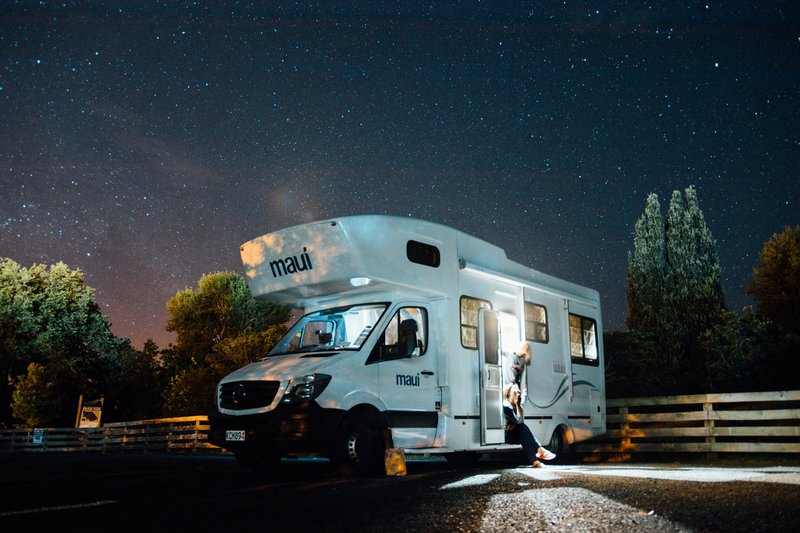
Finding a Place to Camp
If you want a primo campsite, you’ll want to plan ahead. Depending on the campground, the best campsites can book up three to six months in advance.
State Parks
We found that state parks typically offer the most amenities for families in the way of playgrounds, trails, and nature centers for the most affordable prices. The sites are typically more picturesque as well. Depending on the state, you’ll probably pay anywhere from $20-$40 per night.
Federally Managed Campgrounds
A close second to state parks are federally managed sites. These come in the form of Army Corp of Engineer campgrounds, National Parks, as well as other National Monuments and Lands. (You can find a complete list of available campgrounds managed by the federal government at recreation.gov or via their app). These campgrounds tend to be less expensive but may also offer fewer hook-ups (water, sewer, and electric) depending on the campground. You will pay anywhere from $15-$40 per night, depending on the site.
Private Campgrounds
Private Campgrounds run the gamut and can also be a good option for families that are booking a last-minute trip, as they typically have more availability. Prices vary widely from park to park and, as the saying goes, you get what you pay for. You’re more likely to get full hook-ups (water, electric, and sewer) but other amenities including hiking trails, playgrounds, and other diversions are widely varied. You’ll likely pay between $25-35 per night for a no-frills campground and closer to $50-$70 per night for a more upscale option. Regardless of which end of the spectrum you choose, staying for a week or more often provides a discounted rate. (If you plan to stay at private campgrounds frequently, a Good Sam membership offers discounts at many private RV parks).
Free Options
While it may not be a great option for your first run, lands managed by the National Forest Service or the Bureau of Land Management are also available for boondocking (camping without any hook-ups) for free. These are often the most picturesque sites out there, but they are also the most remote. You’ll want to make sure you have a fully charged battery and full tank of fresh water before heading out. You will also want to tell someone where you’ll be as you probably won’t have cell phone service. The app FreeRoam provides a great resource for finding free campsites across the country.
If you’re looking for an option that is off the beaten path, Harvest Hosts and Hip Camp are companies that connect private landowners with campers looking for more secluded camping options. You can camp at a wide variety of cool locales including farms and vineyards. These sites are usually dry camping spots, which means that no hook-ups are provided.
Insider Tip: You can find awesome campgrounds that have already been vetted by our local ambassadors on the happyly App!
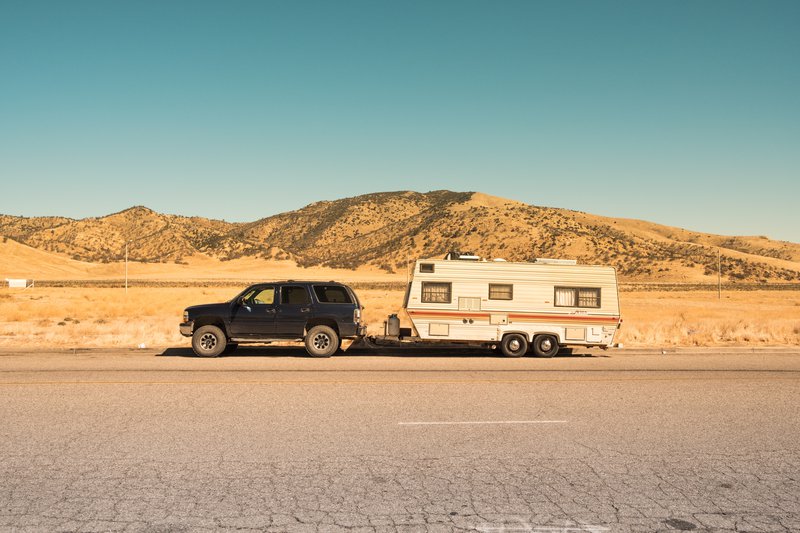
Choosing the Perfect Site
If you can book early, you’ll have your pick of campsites. When making your selection, you’ll want to consider a few things. First, be sure to choose a site that is marked as an RV site as some campgrounds have sites that are designated as tent only. It is also essential to check the dimensions of the parking spot. Even if a site is marked as an RV spot, you’ll want to check the length of the driveway to ensure that your RV and tow vehicle (if you have one) will fit. (If you can unhitch your RV from your tow vehicle, you can often park perpendicular to the RV or at overflow parking, if necessary)
Then, check what types of hook-ups are available at each site. Campsites can have partial hook-ups or full hook-ups. A site listed as a “partial hook-up” usually includes water and/or electric. (You’ll want to look closely to see if it has only water, only electric, or both). A “full hook-up” site will have water, sewer, and electric. Some campgrounds have both partial and full hook-up site options with full hook-ups being a few dollars more expensive than partial.
Another factor to consider is where your site is on the loop. If you plan on using the campground shower or toilets, you’ll likely want a site that is close, but not too close, to the bathhouse. If the loop has a playground, you may also want to consider choosing a site nearby for easier access. We also found that having a spot on the outside of a loop was ideal as far as scenery goes.
Insider Tip: Cross reference the online maps provided by the campground when booking with satellite view on Google Maps. This will allow you to see the actual distance between campsites as well as other amenities.
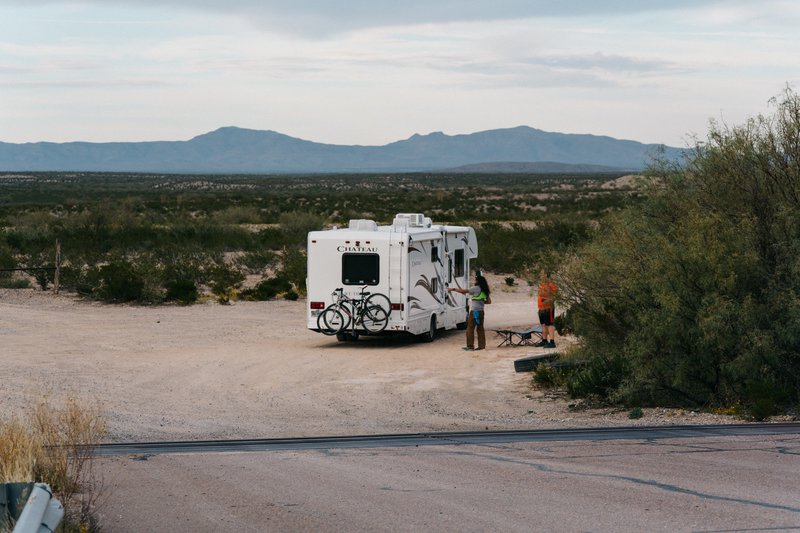
Preparing for Your Trip
If you’re heading out for your first RV camping trip, you’ll need some extra supplies. In addition to all the normal camping gear (minus the tent and sleeping bags), you’ll want to make sure you have the appropriate RV supplies.
First, depending on the hook-ups available at your site, you’ll want to make sure you have the right equipment. If you have electric at your campsite, determine whether it is a 50-amp or 30-amp hook-up. Then, make sure you have the appropriate adapter to fit your shore power line.
If your site has a sewer hook-up, double-check what the campground requires as far as additional equipment. Most campgrounds require campers to use a simple device that ensures the sewer lines are appropriately angled and some campgrounds may require an additional seal to be in place at the sewer hook-up.
Insider Tip: Sewer hook-ups are not often available at state and national parks. It is a good idea to get a portable grey tank (sometimes called a Blue Boy) for these occasions. A portable gray tank allows you to empty your tank and transport the wastewater to the dump station within the campground. Using the campground shower and washing your dishes in a bucket outside are great ways to conserve space in your gray tank but depending on the length of your trip, you’ll likely need to empty your tank at least once during your trip.
If you don’t have a water spigot located at your site, be sure you have enough hose line to reach from your campsite to the outlet. You can then refill your freshwater tank as necessary. (Campground water can be sketchy for drinking, so it’s a good idea to bring a filter or bottled water for consumption.)
Finally, you’ll also want to make sure you have the appropriate leveling blocks as well as chocks so that you can make sure your RV is level front-to-back and left-to-right. Be sure to pack a level so that you don’t have to rely on only your eyeballs!
Since Happyly is all about maximizing your fun and minimizing your planning, we’ve created an Ultimate RV Packing List that you can download here!

Insider Tip: If you find that you forgot a piece of RV equipment at home, Walmart keeps an excellent stock of basic supplies. You will likely find what you need there!
Getting There and Parking
If it’s your first-time camping with an RV, you might be a little nervous about driving and parking. Once you get the hang of it, it’s easier than you would think. If you’re going to use a standard navigation app, it’s a good idea to preview the route beforehand to make sure it won’t be taking you through any tiny city streets or winding mountain roads. You can also download a navigation app that is specifically designed for RVs such as Copilot.
Remember that you won’t be able to hit any drive-throughs in an RV so be sure to pack plenty of snacks. If you need to stop for gas, choose a gas station that calls itself a “travel center”. These usually have larger parking lots and easy highway access.
When it comes to parking, it’s a good idea to watch some YouTube videos before you head out to have a visual tutorial. Before you park, the driver and “co-pilot” should do a quick inspection of the campsite to determine how you’d like the RV lined up within the site. Then, take it slowly and be sure to have agreed upon verbal cues. Simple is usually better (back up, forward, keep going, etc.).
Insider Tip: Rather than saying “left” or “right”, which can be interpreted differently depending on the listener, use the cues “driver’s side” or “passenger’s side” for an unambiguous way to cue the driver which direction the RV needs to come.
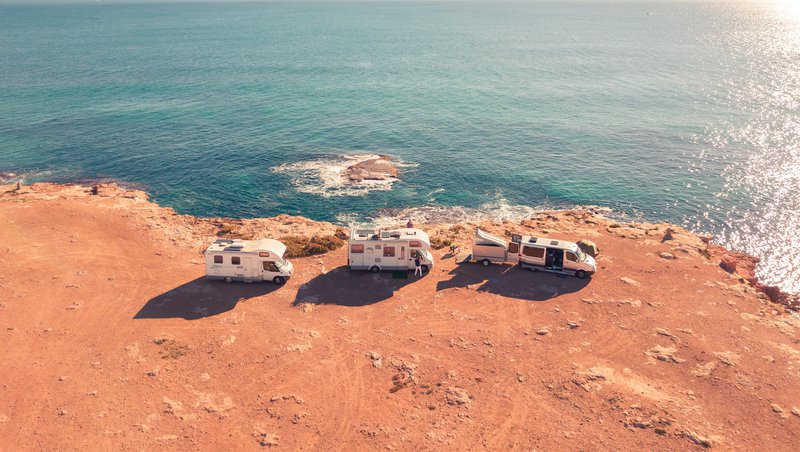
While You’re There
The availability of reliable cell signal or wi-fi varies greatly between campgrounds. Be sure to download any content you’d like to have before you leave home and consider downloading an offline Google Map so that you can navigate to any attractions you might want to visit. Some campgrounds do offer wi-fi to guests, so be sure to ask at check-in.
While you’re camping, be sure to keep an eye on your battery level as well as the water levels in all your tanks. If you’re using propane for heating or cooking, you’ll also want to monitor that to make sure you don’t run out!
Some campgrounds have gates that close at a certain time. While most are fairly late, it’s a good idea to ask at check-in so that you don’t accidentally get locked out if you go out for dinner or other late night adventures! While you’re at it, many state parks and national parks also offer Junior Ranger programs that will encourage little ones to explore the park during your stay.
Finally, when your trip is over and it’s time to head home, it’s not a bad idea to have a “departure checklist” that will remind you of all the things that need to be done to prepare for your trip. You’ll want to be sure you have all of your interior items stowed securely, appliances turned off, and any antennas or windows locked. So you can spend less time planning and more time having fun, we've created an Arrival and Departure RV Checklist for you to download!
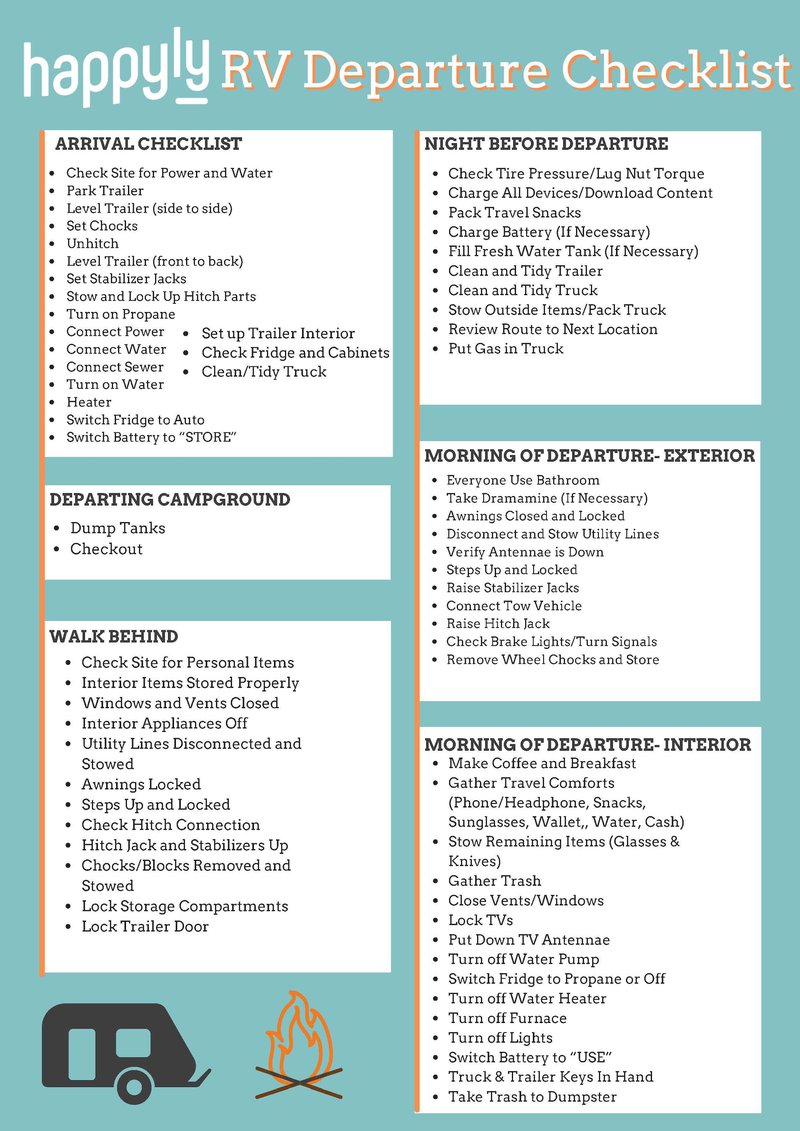
Insider Tip: If you’re far away from home, it’s not a bad idea to ask about local plants and animals that you may want to keep an eye out for, either because they are interesting or possibly dangerous. (While in Arizona, our girls were stopped from picking a very lovely but very poisonous purple flower by a saint of a park ranger. They knew to watch out for the poison ivy that was indigenous to our home in Baltimore, but they had never before encountered a flower that could be just as insidious!)
Family RV Camping For the Win!
While it may seem overwhelming at first, RV camping quickly becomes second nature after one or two trips. It’s a great idea to do a trial run at a nearby campground for a night or two to get your feet wet before heading out for a more ambitious trip.
Once you get the hang of it, camping in an RV really is the ideal way to travel with kids in tow. There is nothing like spending a long day exploring someplace new and then coming back to your very own bed in your very own home away from home!
Does your family have a favorite road trip destination? Please reach out to team@happyly.com and tell us about it, or share your highlights on Instagram @gethappyly for a chance to be featured!
Explore our blog for more inspiration such as Build a Summer Bucket List and Camping, Glamping or RV Travel: What Suits Your Family? or take a few moments to prepare with Five Healthy Homemade Snacks for On the Go and give the coming months all you've got!!
Enjoying our content? Download the happyly app, the country’s only mobile-first family activity planning app, for fast access to all of our blog content, favorite activities, and expertly curated days, both locally and in many communities and travel destinations across the country.